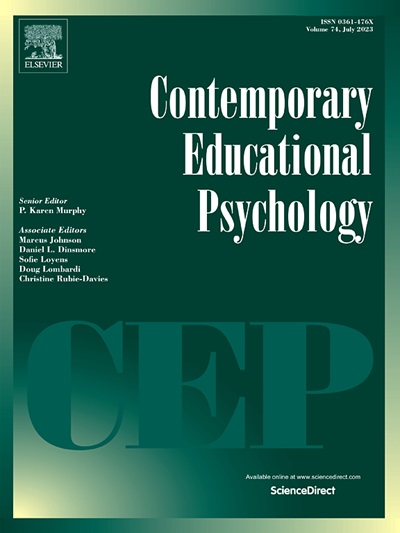最大限度地利用学生生成的图纸来解决现实世界的问题
IF 3.8
1区 心理学
Q1 PSYCHOLOGY, EDUCATIONAL
引用次数: 0
摘要
对许多学生来说,解决现实世界的问题是一个挑战。学生生成的用于解决现实问题的图形的双路径模型表明,当学生绘制的图形(1)准确且(2)符合数学格式时,解决问题的性能将最大化。我们通过提供绘图中使用的关键元素的缩略图表示(旨在提高绘图准确性)和提供数学绘图说明来创建示意图表示(旨在在绘图中初始化数学格式)或情境绘图说明来创建图形表示(旨在初始化绘图)的形式,研究了绘图准确性和问题解决能力如何受到绘图支持的影响无关的情境因素)。在2 × 2的受试者间实验中,以绘图支持(有支持的绘图或无支持的绘图)和绘图指示(情景绘图指示或数学绘图指示)为因素,将112名本科生随机分配到四种绘图条件之一。根据双路径模型,我们发现在绘图支持和数学绘图指导下,学生在解决现实问题上的表现优于其他条件下的学生。基于路径分析,这种影响归因于更高的绘图精度和更少的无关情境因素。结果支持学生生成的绘画如何支持解决现实问题的双途径模型。本文章由计算机程序翻译,如有差异,请以英文原文为准。
Maximizing the benefits of student-generated drawing for real-world problem solving
Solving real-world problems is a challenge for many students. The two-pathway model of student-generated drawing for real-world problem solving states that problem-solving performance is maximized when students make drawings that are (1) accurate and (2) in mathematical format. We investigated how drawing accuracy and problem-solving performance are affected by presence or absence of drawing support in the form of providing thumbnail representations of the key elements to be used in the drawing (intended to enhance drawing accuracy) and providing mathematical drawing instructions to create schematic representations (intended to prime mathematical format in drawings) or situational drawing instructions to create pictorial representations (intended to prime drawings with extraneous situational elements). In a 2 x 2 between-subjects experiment with drawing support (supported drawing or unsupported drawing) and drawing instructions (situational drawing instructions or mathematical drawing instructions) as factors, 112 undergraduate students were randomly assigned to one of four drawing conditions. In line with the two-pathway model, we found that students provided with drawing support and mathematical drawing instructions outperformed those in other conditions on solving real-world problems. Based on path analyses, this effect was attributed to higher drawing accuracy and fewer extraneous situational elements in their drawings. Results support the two-pathway model of how student-generating drawing can support real-world problem solving.
求助全文
通过发布文献求助,成功后即可免费获取论文全文。
去求助
来源期刊

Contemporary Educational Psychology
PSYCHOLOGY, EDUCATIONAL-
CiteScore
16.50
自引率
3.90%
发文量
74
期刊介绍:
Contemporary Educational Psychology is a scholarly journal that publishes empirical research from various parts of the world. The research aims to substantially advance, extend, or re-envision the ongoing discourse in educational psychology research and practice. To be considered for publication, manuscripts must be well-grounded in a comprehensive theoretical and empirical framework. This framework should raise critical and timely questions that educational psychology currently faces. Additionally, the questions asked should be closely related to the chosen methodological approach, and the authors should provide actionable implications for education research and practice. The journal seeks to publish manuscripts that offer cutting-edge theoretical and methodological perspectives on critical and timely education questions.
The journal is abstracted and indexed in various databases, including Contents Pages in Education, Australian Educational Index, Current Contents, EBSCOhost, Education Index, ERA, PsycINFO, Sociology of Education Abstracts, PubMed/Medline, BIOSIS Previews, and others.
 求助内容:
求助内容: 应助结果提醒方式:
应助结果提醒方式:


